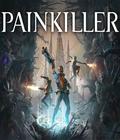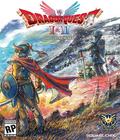Genre: Adventure
Publisher: The Adventure Company
Developer: Alcachofa Soft
Release Date: August 26, 2008
 Playing The Adventure Company's Murder in the Abbey reminded me of "The Name of the Rose," a film starring Sean Connery and Christian Slater as a famous monk and his student, respectively, in the Middle Ages. They investigated mysterious deaths at a remote abbey that also housed a most remarkable library. While the leading character doesn't speak with a Scottish brogue and his student is a lot younger than Slater's character, I couldn't help but think that I might be running through a burning library by the time I made it to the end. Fortunately, there were a few pleasant surprises in store for me as I worked my way through Murder in the Abbey's murder mystery ... along with a few unwanted ones.
Playing The Adventure Company's Murder in the Abbey reminded me of "The Name of the Rose," a film starring Sean Connery and Christian Slater as a famous monk and his student, respectively, in the Middle Ages. They investigated mysterious deaths at a remote abbey that also housed a most remarkable library. While the leading character doesn't speak with a Scottish brogue and his student is a lot younger than Slater's character, I couldn't help but think that I might be running through a burning library by the time I made it to the end. Fortunately, there were a few pleasant surprises in store for me as I worked my way through Murder in the Abbey's murder mystery ... along with a few unwanted ones.
The story opens with Leonardo de Toledo, a monk renowned for his wisdom. He's riding on horseback and accompanied by Bruno, his 13-year-old, donkey-riding charge. Although Bruno is a clumsy, somewhat-useless son of a noble, he hopes to benefit from Leonardo's teachings to become a sterling member of the cloth. On their way to the abbey, Leonardo and Bruno find themselves nearly crushed by a boulder that's pushed from a high ridge. After they reach the monastery without further incident, the abbot welcomes them and asks Leonardo to investigate a mysterious death. The abbot is convinced that not everything is as it seems, and before laying the matter to rest, he wishes to determine whether or not the death was due to the Devil's influence.
Alcachofa's artists have given Murder in the Abbey a stylish look, making each scene feel as if it were inked with a pen and brush, thanks to cartoonish, caricatured 3-D characters and painted backdrops. If it weren't for the murders, it might pass for Saturday morning fare. Director Emilio de Paz's eclectic talents also lend each scene a variety of strong musical tracks, and strong performances from several of the voice actors reflect life in the abbey. However, a few of the voice actors sound like they're having a difficult time in delivering their lines and faking the requisite emotions.
The story manages to come across as somewhat interesting thanks to its characters, but a variety of issues make it occasionally hard to swallow. The worst belongs to Bruno, Leonardo's somewhat imbecilic assistant, whose confused uncertainty is supposed to make him seem like a fresh-faced boy whose adventures outside of a cloistered home life are to be somewhat endearing. Right-clicking on him will occasionally get him to do something, but for most of the game, Leonardo and Bruno will usually say the exact same, long-winded things to each other, making him less of a character and more of a convenient inventory item on two legs. Another sampling is in a scene where a character runs into a burning building and apparently dies, his death scream delivered as if it were read from a cue card.
A mix of pre-rendered cinematics and in-game events continue to move the story along, but while the toon-inspired characters are certainly eye-catching, the animated faces are a different story. Lines aren't lip-synced, which isn't that much of a problem, but characters' facial expressions create some of the most awkward moments I've seen in an adventure game. In one scene, Leonardo meets a friend who he hasn't seen for years, and the two have a jovial chat, but when it comes time to end the conversation, Leonardo's friend suddenly appears as if he might never see Leonardo again, and Leonardo's serious face seems to scowl back for having the temerity to question his dedication — which the dialogue clearly doesn't intend. The first time around, it was understandable, but when the conversation is ended in the same surprised look and scowl every time, it looks emotionally bizarre. There are also pregnant pauses scattered everywhere else, making me think at one point that the game was trying to load an expression into memory, which isn't the case. This definitely turns certain scenes into stilted viewing experiences because my attention is focused on the wrong thing.
Most of Murder in the Abbey is your standard point-and-click adventure, where you move a mouse around to collect objects and create solutions as you explore the abbey. Leonardo's inventory slides in over the screen when you move the mouse to the top; this feels clunky, and it doesn't help matters that you have to manually stick things into the inventory even though you can't control the order in which the items appear. Leonardo also has a diary in which he keeps track of his investigation, but he does a poor job of providing observations on what he should do next, which would help point the player in the right direction. There were moments when it was somewhat useful, but for the most part, it focuses on generalities and waits on the player to throw everything but the kitchen sink at it an attempt to "figure" things out.
Getting around is as easy as double-clicking the edge of the screen when the cursor changes into an arrow, zapping Leonardo and Bruno to the next area. When you're outside, a map can be called up to immediately whisk the two over to where they need to go. Brace yourself with a good book if you want Leonardo to walk over to something because he moves with all the speed of a sandaled turtle, with one plodding step after another.
A majority of the puzzle design is item-hungry, meaning that you need to have the correct items in your inventory to keep moving forward. While many adventure games allow you to flex your brain matter in piecing together ancient combination tiles, a musical score in order to unlock a secret panel, or determining the right ingredients to mix together to create something, Abbey sticks firmly to creative kleptomania.
For example, to open a wax stopper on a jar, you'll need to boil it. How you go about doing that is only part of the mystery, since that isn't something that one typically thinks of when dealing with corked pottery. Perhaps holding it over a flame to melt the wax seal? Or using a fine knife to peel it away? None of these possibilities occur to Leonardo, despite how obvious they might be to the player since the design is heavily reliant on item-based, hunt-the-hotspot solutions to its problems. The challenge is presented via the game design, rather than with imaginative puzzles, which would have engaged the player's grey matter.
Most of the time, Leonardo simply won't say anything to clue you in what you should try, and Bruno is no Nico or Sophia. Instead of logically thinking that using a crowbar to pry off a lock might do the trick to break into a building, randomly clicking on enough items to blow it up instead made more sense, since it is obviously what anyone from the medieval era would think of when confronted with a locked door, never mind why a barrel of gunpowder was at an abbey of peaceful monks in the first place. It would have been nice to hear Leonardo say something along the lines of, "The look is too strong for the crowbar. I should think of another way to open this door," or, "The lock can't be broken like this. What does Bruno think?" Leonardo will often say something completely unrelated to the problem, leaving me to wonder if I had missed an item and forcing me to waste even more time scanning pixel scenes with my mouse. There is a reason why titles such as Dreamfall have wisely opted to avoid relying on methods like this.
The only real puzzle that requires you to think comes late in the game, something that the "brilliant" Leonardo ironically ignores as useless until you throw its missing piece at it. How did I know that a piece was missing? I didn't, since Leonardo simply says something along the lines of, "Not yet," instead of, "I think there might be a piece missing ...," which would have been vastly more helpful. Abbey loves to leave you twisting in the wind until you have the correct inventory items to use in every scene in the hopes that it might actually work.
Another instance occurs while asking about a mysterious desk. One particular character who you might think would know had used it to enter the room, but for whatever reason, can't be spoken to. This leaves you to figure out yet another meandering path to the solution with no explanation. Leonardo's stock responses of, "No," or, "There aren't any clues," are typically all that the player will have to glean from his reputedly inestimable knowledge.
Sometimes, I felt that Leonardo made statements that came out of left field, and not because he's a legendary scholar or anything, but because the script had to push the player in a certain direction. Why do I need to investigate the cell of a dead monk when it was ignored earlier? I have no idea, but I found out about this only because it suddenly came up as a question topic. Other times, he'll also say things that clearly didn't happen in the game as if to make a point, such as at the end, when he mentions seeing a character leaving a certain location, although I never saw it occur.
Performance for Murder in the Abbey was smooth, aside from one freeze that forced me to close the game, but other rough spots appear elsewhere to tarnish the production. Instances — such as the wrong voice clip playing during a conversation, no voices playing at all, watching characters clip through each other or walk on top of props painted into the background — occurred far too often to be ignored. If you have dual monitors, you might also want to be careful about going too far off of the right edge of the screen, as clicks can minimize the game.
Despite the boast of having over 1,000 backgrounds and over 40 hours of gameplay, Murder in the Abbey is not an RPG, and veteran investigators may have an easier time with this over a weekend than others might. Murder in the Abbey shines due to its unique graphics, stirring soundtrack, and the care given in telling its somewhat-familiar story. The clunky gameplay has too many problems to make it feel as if it were worth the effort, though, even with the occasional fun moments that manage to creep in. If sweeping your mouse over every scene just to find a vital item tickles your investigative fancy, and if you enjoy taking leaps of logic that make sense only to the NPCs, then you might find have found your calling in this medieval murder mystery. Otherwise, you should simply rent "The Name of the Rose."
Score: 5.8/10
















































